Exploring the Depths of Carnage in Spider-Man Lore
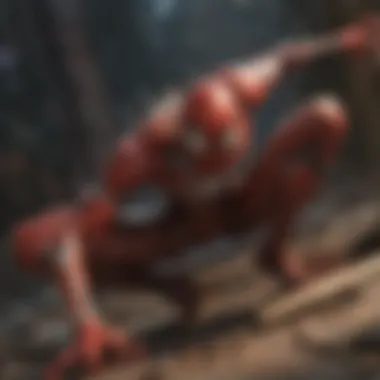
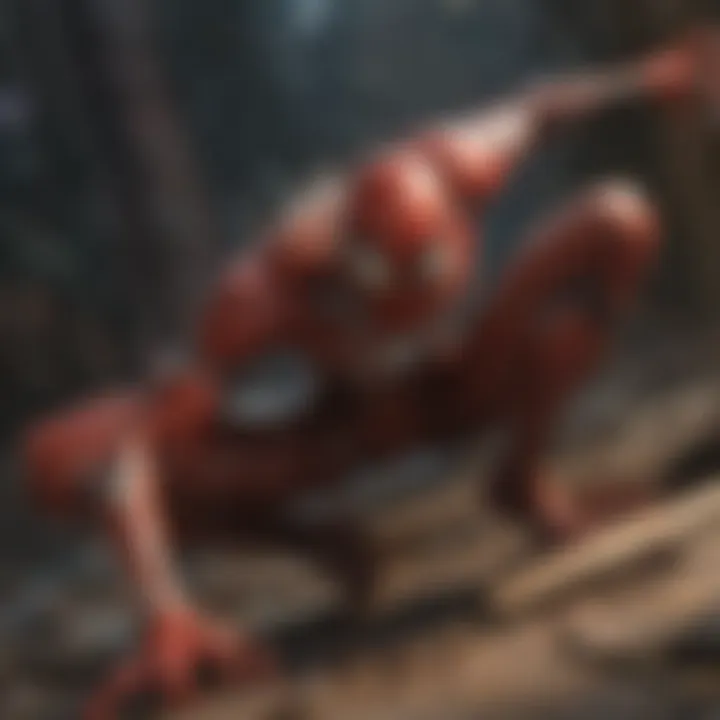
Intro
In the vast tapestry of the Spider-Man universe, few characters loom as large or exhibit as chilling a presence as Carnage. This unhinged symbiote, birthed from a chaotic blend of sheer malice and dark origins, serves as more than just a foil to Spider-Man; he embodies the very chaos that thrives in the shadows of the superhero genre. As we dig deeper into the character of Carnage, we will explore his origins, unsettling motivations, and his longstanding feud with Spider-Man and the more nuanced relationship he shares with his predecessor, Venom.
The journey into understanding Carnage requires less of a leap and more of a descent into madness. Born from the mind of comic book creators as a hyper-violent alter ego, Carnage’s descent into the depths of villainy is marked by calculated chaos and a ravenous thirst for destruction. With roots entangled in madness and a complete disregard for human life, this character has evolved across various mediums, capturing the imagination of Spider-Man fans worldwide.
Spider-Man Character Analysis
Background
Spider-Man, a character created by Stan Lee and Steve Ditko in 1962, has undergone an extensive evolution since his inception. Originally introduced as a teenage hero grappling with the typical struggles of adolescence, Peter Parker quickly became a beloved icon. His journey from a socially awkward youth to a seasoned crime-fighter provides a rich backdrop to explore the characters he interacts with, including his formidable foes like Carnage.
While Spider-Man’s origin story is grounded in the relatable themes of responsibility and power, Carnage’s backdrop is starkly different. Born Cletus Kasady, a troubled young man who faced a turbulent upbringing, his transition into Carnage symbolizes the destructive force of unbridled rage and resentment.
Powers and Abilities
Much like Spider-Man, Carnage possesses extraordinary abilities that make him a formidable adversary. The symbiote that bonds with Kasady grants him powers that not only rival Spider-Man's but, in many cases, exceed them. These include:
- Enhanced Strength: Carnage can lift substantially heavier objects than the average human and even Spider-Man himself.
- Shape-Shifting: The symbiote allows Carnage to alter his shape, creating weapons and tendrils to lash out at enemies.
- Healing Factor: Any injury he sustains can heal quickly, a significant advantage in combat.
- Psychic Connection: Unlike Venom, Carnage shares a telepathic bond with Cletus, creating a seamless connection that enhances their attacks.
This blend of abilities capitalizes on his unpredictability, making him all the more terrifying in a combat situation.
Character Development
Over the years, Spider-Man has seen significant growth and change. Key moments, like his encounters with Carnage, have pushed him to confront darker aspects of his own nature. The relationships Spider-Man builds, especially with antiheroes like Venom, highlight his journey from heroics to a more complex moral landscape.
In contrast, Carnage represents the antithesis of this growth. His arc is a spiral into deeper chaos, demonstrating how a character can descend into madness. Their confrontations are often cataclysmic, marking pivotal points in Spider-Man's story and forcing him to confront not only a foe but also the reflection of what he could become if he's not careful.
"Carnage is devoid of all morals, a true embodiment of chaos; when he faces Spider-Man, it is not just a battle of skill but a clash of ideals."
Latest Spider-Man News Update
Comic Books
The Spider-Man comic series continues to evolve, with new releases reflecting modern storytelling trends. Recent arcs have brought back classic foes while introducing new narratives that flesh out Spidey’s world and include intense interactions with Carnage. Keeping tabs on platforms like Wikipedia) helps to stay updated.
Movies
With the cinematic success of Spider-Man films, upcoming releases have fans buzzing with excitement. Carnage made a notable appearance in Venom: Let There Be Carnage, where his character was fleshed out on the big screen. Future projects may explore more about this chaotic villain.
Video Games
The gaming landscape for Spider-Man is booming with new releases that dive into various facets of his universe. Games like Spider-Man: Miles Morales and anticipated DLC expansions offer players thrilling interactions with Carnage among other iconic villains. Updates are frequently discussed in forums like Reddit for fresh insights.
Top Villains in Spider-Man Universe
Main Antagonists
Carnage is often regarded among Spider-Man's top-tier foes, but he isn’t alone. The rogues' gallery includes heavyweights like:
- Green Goblin
- Doctor Octopus
- Venom
Each villain brings their own unique challenges to Spider-Man.
Origins and Motivations
Understanding a villain's background helps in deciphering their actions. For Carnage, the childhood trauma and psychological issues mold him into a creature of chaos, making him a reflection of societal issues rooted in neglect and abuse. His motivations can often stem from a twisted sense of freedom, contrasting sharply with Spider-Man's principles.
Memorable Battles
The toss-up between Spider-Man and Carnage results in some of the most thrilling and brutal stories from the comic future. Their battles showcase not only physical confrontations but also psychological warfare, as they challenge each other’s ideologies.
Spider-Man Movie Reviews
Plot Summary
Spider-Man films, especially the most recent installations, provide a captivating plot that intertwines Spider-Man’s lone wolf persona with the urgency of dealing with villains like Carnage, highlighting themes of isolation and heroism.
Character Portrayals
The portrayal of Spider-Man’s character in films has evolved, with actors bringing their unique flair to the role. Notably, Tom Holland's youthfulness and charisma add a refreshing dimension that engages audiences while facing darker foes like Carnage.
Visual Effects
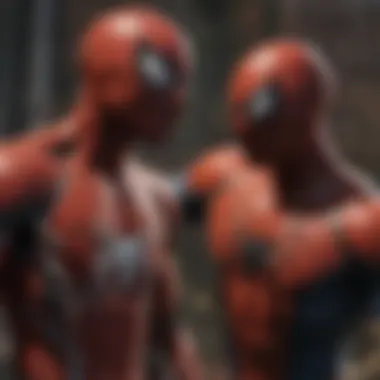
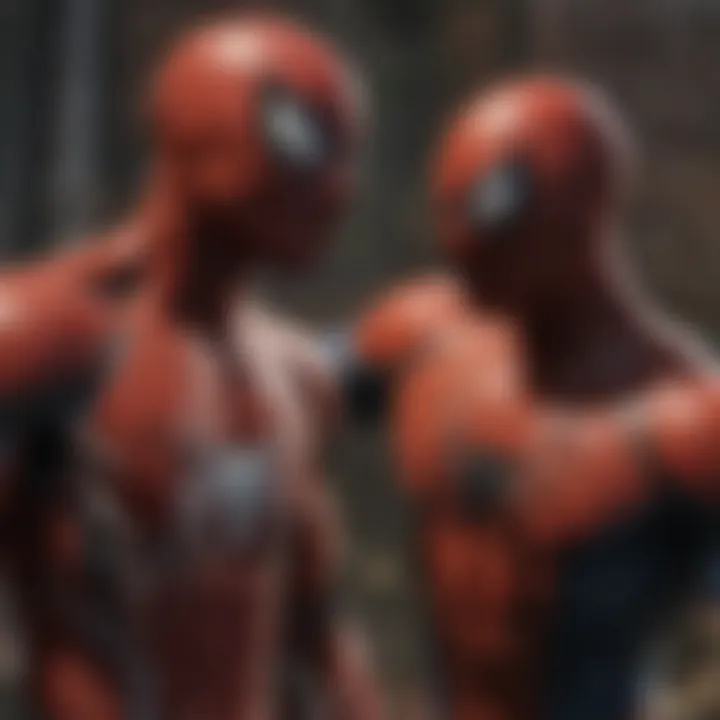
The CGI used in action sequences enhances the suspense of Spider-Man's confrontations with Carnage, particularly how the symbiote morphs and strikes within the film environment.
Understanding Carnage is not just a journey through violence but also an exploration of the darker aspects of humanity, making him an indelible part of the Spider-Man legacy. As fans continue to unravel his character, the impact remains profound on both the comics and the wider culture.
Prolusion to Carnage
Carnage, in the realm of Spider-Man, is not just another villain to toss into the ring; he stands out as a chilling and memorable figure. His presence adds layers of complexity and intrigue to the Spider-Man narrative, positioning him as a force of chaos and destruction. Understanding Carnage goes beyond acknowledging him as a mere antagonist; it requires an exploration of his twisted psyche, his origins, and how he interacts with the web-slinger and his nemesis, Venom.
When diving into Carnage's story, one recognizes the significant role he plays in expanding the themes of morality, humanity, and the nature of evil within the Spider-Man universe. His character often serves as a foil to Spider-Man, challenging not just the hero's physical capabilities but also his ethical principles. This section aims to lay the groundwork for a deeper understanding of Carnage's essence and the relationships that shape his character.
Definition and Importance
Defining Carnage primarily revolves around his identity as a symbiote-powered villain who embodies chaos. Originating from the failed experiments tied to Venom, he represents an amplification of the darker tendencies that can lie within. Besides being a brutal adversary, Carnage symbolizes the uncontrollable potential of violence and madness present in society.
The importance of Carnage is notable in that he embodies the extreme—far removed from traditional good vs. evil narratives. He is not bound by the same moral limitations as many other villains, often pursuing death and carnage with almost a childlike glee. By studying his character, readers and audiences can grasp the darker, raw emotions that fuel such chaos and desolation, which helps to elevate the stakes within the Spider-Man saga.
Relation to Spider-Man
The connection between Carnage and Spider-Man provides fertile ground for exploration. At its core, their relationship is built on contrasting ideologies. While Spider-Man upholds values of responsibility and compassion, Carnage revels in disorder and destruction. This juxtaposition amplifies the tension between them, creating a narrative that not only captivates but also poses tough questions about justice, heroism, and the fragility of human sanity.
Moreover, the dynamic between Spider-Man and Carnage sheds light on the complex relationships within superhero lore. As villains evolve, heroes need to adapt, and this interplay fosters significant character growth. The tragedy of Carnage is deeply tied to his alter ego, Cletus Kasady, whose troubled past forms the bedrock of Carnage's motivations. It's this intricate web of personal history, moral divergence, and chaotic ambition that makes the clash between Spider-Man and Carnage not just a physical battle, but a profound confrontation of ideals.
Carnage's Origins
The origins of Carnage are a vital piece in understanding his character and the broader narrative in the Spider-Man universe. Carnage's backstory provides insight into his motivations, his relationship with other significant characters, and the chaos he brings to their lives. To truly appreciate Carnage’s impact, one must explore both the circumstances of his genesis and the complex psyche behind the character.
Creation and Background
Carnage was introduced to the comic book world in The Amazing Spider-Man #361, published in 1992. The brainchild of writers David Michelinie and artist Mark Bagley, Carnage emerged during the 90s, a time when comic book villains were becoming increasingly darker and more complex. The character was conceived as an even more violent counterpart to Venom, who himself was a product of Spider-Man's own past. This made Carnage not just a villain, but rather a figurative dark reflection of Spider-Man’s choices and failings.
The symbiote that transforms Cletus Kasady into Carnage originates from the same species as Venom, but it differs significantly in its attributes. Unlike his predecessor, who often displays a twisted sense of loyalty and even morality, Carnage embraces chaos as a core component of his existence. Derived from a piece of Venom left behind after Eddie Brock's incarceration, the Carnage symbiote melded with the psychotic and murderous Kasady, amplifying his inherent violence.
In exploring Carnage’s creation, it is essential to consider the cultural backdrop of the early 1990s, a period rife with social issues such as increasing violence in media and the complexities of mental health. The character became a metaphor for unchecked aggression and chaos. Some consider him a reflection of the fears of society—what happens when someone without moral restraint harnesses immense power?
The Character of Cletus Kasady
Cletus Kasady is not merely a vessel for the Carnage symbiote; he is an intricate character whose psychological makeup provides depth to his madness. From a young age, Cletus was often described as a disturbed child with a propensity for violence. Raised in a chaotic environment, marked by abuse and neglect, his relationships were shrouded in hostility, shaping the man he would become.
Cletus Kasady’s psyche is an essential part of the Carnage narrative. He embodies anarchistic destruction and finds solace in the havoc he wreaks, often viewing murder not only as a means to an end but as a form of art. His sadistic tendencies are magnified by the symbiote, creating a volatile entity that delights in chaos. Whereas Venom occasionally teeters on a moral line, Carnage dives headfirst into the depths of depravity without looking back.
"Carnage is the personification of chaos, devoid of the need for motives other than pure fun and bloodshed."
Therefore, Kazady’s relationship with the symbiote is symbiotic in the truest sense of the word. Unlike Eddie Brock, who frequently engages in an internal struggle, Cletus and Carnage are one and the same, bound by a shared zeal for mayhem and destruction. Their interactions with Spider-Man and Venom often become more than mere battles; they represent ideological clashes—between order and chaos, responsibility and irresponsibility.
Carnage's origins lay a groundwork that helps to understand not only his motivations but also the fears and challenges that Spider-Man and his allies must navigate. By delving into Cletus Kasady’s background, one can see how he becomes one of the narrative's most compelling antiheroes—a figure that even in his heinousness, prompts questions about identity and morality.
Powers and Abilities
The powers and abilities of Carnage are central to understanding his character and his role as one of Spider-Man's most perilous foes. They not only contribute to his fearsome reputation but also underscore the chaotic nature that Carnage embodies. In the realm of comic books, the evaluation of a character's abilities often serves as a lens through which themes of morality, control, and identity can be explored.
Symbiote Characteristics
Carnage, like Venom, is a product of the symbiote race, but it differs in many ways. One significant characteristic of Carnage's symbiote is its adaptability; it can morph its form to a remarkable degree. This malleability allows Carnage to form weapons such as blades and shields from his own body, a grotesque adaptability that often leaves his adversaries dazed and confused.
Moreover, Cletus Kasady, the human host for Carnage, shares a unique bond with the symbiote that makes them nearly inseparable. Unlike Eddie Brock, who sometimes experiences friction with Venom, Kasady revels in the chaos that the symbiote provides. This synergy results in heightened physical abilities, including superhuman strength, agility, and stamina. It is common to see Carnage withstand blows that would incapacitate ordinary beings, a literal testament to his unnerving resilience.
"In a world where power comes from chaos, Carnage reigns supreme."
Furthermore, the symbiote grants Carnage a regenerative ability that allows him to recover from injuries faster than most characters in the Spider-Man universe can hope for. This regenerative property often frustrates heroes, as they find it incredibly difficult to restrain or defeat him for good.
Combat Skills
When it comes to combat, Carnage is not just a brute force. His fighting style is predicated on a combination of ruthlessness and cunning intelligence. Cletus Kasady’s own psychological instability melds with Carnage’s capabilities creating a tactical unpredictability that is troubling for even the most seasoned fighters.
Employing psychological warfare, Carnage often uses fear as a weapon just as much as his formidable physical prowess. His ability to instill dread in his opposition gives him a significant advantage right from the start of a confrontation. In melee combat, Carnage showcases remarkable agility, making it difficult for opponents to anticipate his movements. His fluidity in battle means he can shift from offense to defense seamlessly, keeping his enemies on their toes.
Another fascinating element of his combat style is his penchant for creativity in the heat of battle. Carnage has been portrayed as using his environment to inflict maximum damage—whether that means splintering walls to create debris for opponents or using his own symbiote tendrils to manipulate surroundings. This adaptability ensures that each encounter with Carnage is typically brutal and unpredictable.
In summary, understanding the powers and abilities of Carnage contributes significantly to appreciating the character's complexity. His unique symbiote characteristics and combat skills make him a formidable and chaotic figure in the Spider-Man universe, exemplifying the themes of destruction and psychological breakdown that permeate his narrative.
Cultural Impact of Carnage
Carnage's cultural significance within the Spider-Man universe is profound and multifaceted. Since his debut in the early 1990s, this character has transcended his comic book origins to become a staple in various elements of pop culture. His chaotic nature and complex psychological profile resonate strongly with themes of violence, madness, and the darker aspects of humanity.
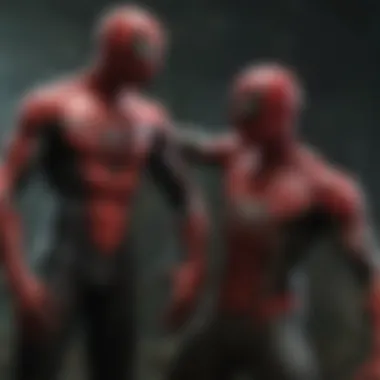
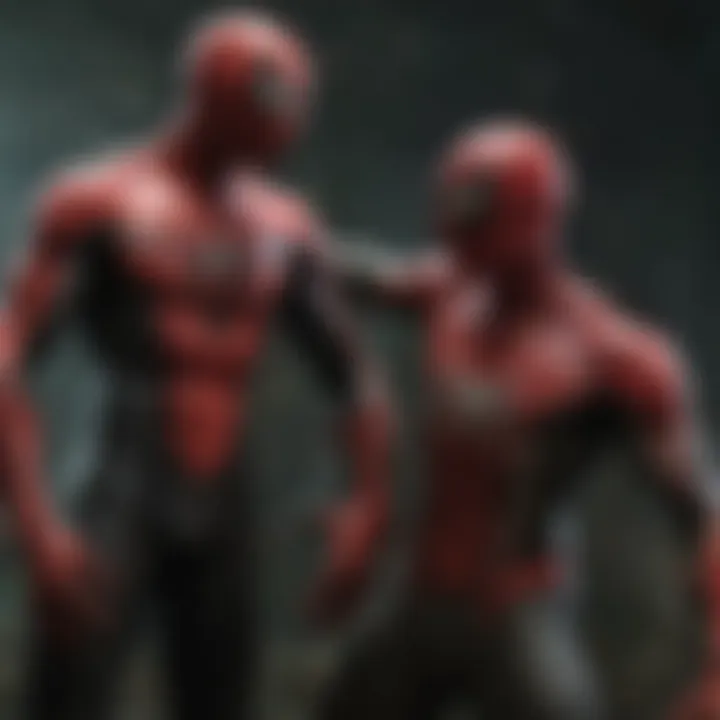
The importance of examining Carnage’s cultural impact extends beyond merely understanding a villain's role in a series. It delves into the societal reflections his character invokes and the conversations he encourages around morality, redemption, and the very nature of evil. Carnage represents an emblematic figure of chaos contrasting sharply with the often-heroic personas in the Spider-Man narrative. This antagonism enables readers and viewers alike to ponder deeper questions about choice and consequence, influenced heavily by his actions and motivations.
Influence on Popular Culture
Carnage’s reach into popular culture has been impressive. His introduction into the Spider-Man series paved the way for numerous adaptations across various media, including animated shows, films, and video games. Here are some key points regarding his influence:
- Comic Books and Graphic Novels: The character has appeared in numerous storylines, where his interactions with Spider-Man and Venom have become benchmarks for catastrophic conflicts blending horror with action.
- Film and Television: Carnage’s appearances in series from the 1990s animated Spider-Man to modern films such as "Venom: Let There Be Carnage" illustrate how he has been adapted to resonate with new audiences whilst retaining his original menace.
- Merchandising: His striking design and distinctive palette have spurred a wide array of merchandise, from action figures to clothing, boosting his recognition beyond the comic book realm.
These elements, all together, show how Carnage has embodied a deeper cultural archetype of the anti-hero and villain, becoming a recognizable figure that illustrates the extremes of both extremes in our narratives.
Merchandising and Fan Reception
Carnage’s character has not only transcended stories but has also made waves in the merchandising world. The range and variety of products inspired by him indicate his commercial viability and appeal across demographics. Some key aspects of this merchandising phenomenon include:
- Action Figures and Toys: Companies such as Hasbro have released numerous action figures that capture Carnage's chaotic essence, catering to collectors and younger fans alike.
- Clothing and Accessories: From graphic t-shirts featuring the character’s iconic imagery to cosplay outfits, fans express their admiration through everyday wear, further embedding him into pop culture fabric.
- Conventions and Fan Art: Comic conventions have seen an explosion of Cosplay and fan art dedicated to Carnage. His popularity within these spaces showcases how he inspires creativity and interaction among fans.
The reception of Carnage is often mixed, as many fans are drawn to his raw, chaotic nature, while others critique the representation of villainy in a character who lacks traditional redemption arcs. Ultimately, Carnage's role in the cultural landscape is as complex as the character himself, engaging audiences on multiple levels.
Carnage in Comic Books
The comic book medium is where Carnage truly found its footing as a formidable antihero and villian within the Spider-Man Universe. His stories, marked by intense action and psychological depth, provide the canvas upon which the complexities of his character and his chaotic nature are painted. While many villains come and go, Carnage has managed to carve a niche that resonates across different narratives and generations of readers. This section aims to not only spotlight the pivotal moments in Carnage’s journey through comics but also reveal the underlying themes that enhance his presence in the Spider-Man lore.
Key Story Arcs
Carnage has been featured in a number of key story arcs that highlight his violent nature and unpredictable unpredictability. One of the most notable is the "Maximum Carnage" arc. This crossover event showcases Carnage assembling his own group of villains, leading to an all-out war with Spider-Man and his allies. The stakes escalating drastically shows how Carnage distorts even the strongest of heroics, pushing characters like Venom and Spider-Man to their breaking points.
Another significant story arc is "Carnage: Family Feud," where we learn more about Kasady's background and how his chaotic symbiote's existence intertwines with his personal history. This storyline explores the mind of the man behind the monster, revealing how trauma and rage culminated in the creation of this horrifying entity.
"Carnage embodies the purest form of chaos; his story arcs are not just battles, but explorations of fear, control, and what it means to be human—or not."
In addition to those arcs, the recent "Absolute Carnage" storyline links the character to the larger narrative of symbiotes in the Marvel comics, showcasing how Carnage’s ambition puts him at odds with not just heroes but the very essence of the symbiote legacy itself. Through these pivotal stories, the reader witnesses the necessary evolution of Carnage from mere villainy to tragic complexity.
Character Development Over Time
Over time, Carnage has exhibited a distinctive transformation, seamlessly transforming from a chaotic murderer into a character with nuanced motivations. In the early appearances, Cletus Kasady is portrayed mainly as a mindless killer, showcasing only his power and chaos without delving too deep into his psyche. However, as the writers developed his character through various arcs, more depth was added to his motivations. This evolution provided insights into the duality of Kasady’s personality—the line perhaps blurred between human and monster.
In more recent comics, themes of manipulation, loyalty, and even family bonds are explored. For instance, the relationships that Kasady forms within the chaos become focal points, hinting at unpredictability beneath his brutal facade. And, unlike many villains who seek power solely for its own sake, Carnage’s motivations often come from a place of desire for recognition and attention.
As the narrative framework of comic books advances, so too does the character of Carnage. His complexity invites readers to ponder the nature of good and evil, and whether a character enveloped in sin can gain any form of redemption. Readers find themselves grappling not just with Carnage as a foe but with the understanding that behind every horrific act lies a troubled soul.
In summary, Carnage’s presence in comic books encapsulates not only thrilling confrontations and violent chaos but a journey through the psyche of one of Spider-Man's most iconic and complex adversaries. His arcs serve as both a frightening spectacle and a reflective inquiry into human nature, making them essential reading for anyone eager to grasp the depths of the Spider-Man Universe.
Adaptations in Media
The way Carnage has been adapted into various forms of media highlights his significance within the Spider-Man narrative. Each adaptation offers unique insights into this chaotic villain, enhancing our understanding of his complex psyche and the darker themes he embodies. From animated series to live-action films, these adaptations serve both to entertain and to explore deeper questions about morality, identity, and the nature of evil.
Animated Series Appearances
Carnage’s presence in animated series marks a turning point in how audiences perceive him outside comic pages. One notable appearance can be found in Spider-Man: The Animated Series, where he first made his debut in the second season. This series aimed to capture Carnage’s menacing presence, leveraging vibrant animation and dramatic storytelling to emphasize his lack of remorse and primal instincts.
In the episode "Carnage", voiced by the endearing voice actor, he was depicted with a sinister flair, brilliantly showcasing his battles against Spider-Man. It's fascinating how the show creators leaned into his relationship with Venom, portraying it as not merely a partnership but one steeped in mistrust. This aspect helped expand the character's background as a rogue villain, setting the stage for future interactions with both Spider-Man and his own symbiote counterpart.
Notably, Ultimate Spider-Man took a different approach, presenting Carnage in a more comedic light, albeit dark humor, where he appeared as an enemy in multiple episodes. This version, while different and arguably lighter, still managed to hold onto his core traits — chaos and destruction — making it evident that Carnage's adaptability in storytelling keeps him relevant, regardless of the tones presented.
Film Representation and Critiques
When it comes to film, Carnage's representation has had an interesting journey. The character made a significant mark in Venom: Let There Be Carnage, released in 2021. Here, he was brought to life by actor Woody Harrelson, portraying Cletus Kasady with a mix of obsessive mania and chilling charisma. The film posits Carnage as a fearsome threat, showcasing not only his brutal combat skills but also a disturbing bond with Kasady that can only be described as toxic.
Critiques of this film’s adaptation center around its treatment of Carnage as merely a backdrop for Venom's storyline. While fans appreciated the conflict presented on-screen, many felt that it did not fully explore the intricacies of Kasady's twisted mind or the chaotic philosophies that make Carnage such a compelling villain.
"The film could have dived deeper into Kasady's background and psychology, setting a stage for his motivations, rather than merely painting him as a villainous character."
In contrast, some reviews lauded Harrelson’s performance and the visual representation of Carnage, deeming it a victory in special effects, albeit suggesting that the narrative relied too heavily on action rather than character exploration. Adaptations have shaped perceptions of Carnage, and each new incarnation—be it animated or live-action—adds layers that compel ongoing discussions about his legacy in the Spider-Man universe.
Carnage's Relationship with Other Characters
Carnage doesn't exist in a vacuum. His interactions with other key figures in the Spider-Man universe are crucial to understanding his motivations and the conflicts that arise. This section explores the dynamics between Carnage and some of his most notable counterparts, highlighting how these relationships not only shape his character but also propel the narratives in which he appears.
Venom: Allies and Antagonist
The relationship between Carnage and Venom is a centerpiece of the Spider-Man lore. Originating from the same alien symbiote species, their bond is a complex blend of animosity and twisted kinship.
- Contrast in Ideologies: Venom, though often violent, maintains a unique code of ethics. In contrast, Carnage, embodying chaos, operates without moral constraints. This difference ignites conflict, as Venom often finds himself needing to stop Carnage's rampages, creating a cat-and-mouse dynamic.
- Temporary Alliances: It’s worth noting that in various storylines, they have been forced to work together against a common threat. These moments reveal a nuanced layer to their relationship, where personal agendas clash even in the face of a bigger danger.
- Personal Grudges: The history they share goes beyond the symbiote bond; it is steeped in a history of violence and betrayal. Venom, as a character filled with rage against Spider-Man, sees Carnage’s senseless brutality as both a mirror and an antithesis to his own quest for vengeance.


This duality keeps readers engaged, often leaving them to ponder whether there’s a chance for redemption or if Carnage is doomed to embody chaos.
Confrontations with Spider-Man
The clashes between Spider-Man and Carnage are a thrilling aspect of their narratives, serving as a stage for both their philosophies. These confrontations raise questions about heroism, morality, and the impact of violence.
- Philosophical Opposition: While Spider-Man embodies responsibility, Carnage exists to disrupt that order. Each fight signifies more than mere physical confrontations; they stand for the struggle between chaos and duty. This contrast produces intense, gripping storylines.
- Emotional Stakes: Each encounter escalates in personal stakes. Spider-Man’s struggle against Carnage often evokes the deeper psychological scars from their skirmishes. In a way, every battle forces Spider-Man to confront not just Carnage's brutality but also his own fears of failing those he protects.
- Impact on the Spider-Man Universe: The aftermath of their confrontations often sends ripples throughout the Spider-Man universe. Carnage’s actions can lead to new villains emerging, alliances forming, and even altering Spider-Man's path. Readers are left to wonder—how many innocents must pay the price in this endless game of life and death?
In the ever-evolving Spider-Man lore, Carnage's influence is a testament to how intricately character relationships can shape and redefine narratives. Whether as a foe or a dark counterpart, his presence makes every arc more compelling.
In summary, the interactions between Carnage, Venom, and Spider-Man are more than just battles of strength; they fundamentally explore themes of morality, chaos, and the cost of heroism. These relationships contribute to a richer understanding of not only Carnage as a character but also of the broader Spider-Man universe itself.
Psychological Profile of Carnage
Understanding the psychological profile of Carnage offers valuable insights into the motivations and actions of one of Spider-Man's most notorious villains. This exploration illuminates not only the character of Carnage but also the broader themes of morality and chaos that he embodies. Carnage's psyche is rooted in trauma, violence, and an unquenchable thirst for destruction, making him a compelling figure not just in comics but in psychological study as well.
Understanding Cletus Kasady's Mindset
At the core of Carnage is Cletus Kasady, a man whose upbringing was marred by neglect and abuse. Growing up in an environment filled with violence and instability, Kasady developed a distorted view of the world around him. His sociopathic tendencies manifest in a relentless desire for chaos, which is only exacerbated when he merges with the symbiote that gives him his powers.
Kasady exhibits several traits typical of a psychopath, including a lack of empathy, narcissism, and a need for dominance. When we look at his actions, it’s clear that he revels in pain—not just his own, but that of others. This sadistic pleasure is a driving force behind his villainy. He doesn't merely kill; he does so creatively, finding innovative and gruesome ways to instill fear in his victims. Understanding Kasady’s mindset sheds light on how someone can embody pure malevolence and chaos, as he frequently challenges both societal norms and Spider-Man himself.
"Cletus Kasady represents the darkest potential of humanity, which makes him more than just a villain; he’s a mirror reflecting our own failures and fears."
Themes of Chaos and Destruction
The themes of chaos and destruction are ingrained in Carnage's narrative. He serves as a manifestation of the chaos that exists in the universe—a stark contrast to Spider-Man’s ideals of responsibility and justice. Where Spider-Man seeks to uphold order, Carnage embraces disorder. This opposition makes their confrontations not just physical struggles, but philosophical ones, too.
In many story arcs involving Carnage, we see the repercussions of unchecked violence and madness. He embodies the idea that if order is not actively maintained, chaos will inevitably rise. His interactions often lead characters and readers alike to confront uncomfortable truths—about morality, free will, and the darker aspects of the human condition.
On a broader scale, Carnage's chaotic nature resonates with contemporary societal fears: the unpredictability of life, the randomness of violence, and the lurking potential for destruction within any individual. His character compels us to question what lies behind the masks we wear. Isn’t there a little bit of 'Carnage' in all of us, waiting for the right trigger to break free?
Ultimately, by studying Carnage’s psychological profile, one can appreciate the intricate dynamics of his character as both a villain and a symbol of chaos. His presence serves not only as a threat within the Spider-Man universe, but also as a catalyst for exploring deeper moral and psychological questions.
Fan Theories and Speculations
Fan theories and speculations serve as a captivating lens through which audiences can engage with the multifaceted character of Carnage. This aspect of the article explores how the community of Spider-Man enthusiasts interprets and forecasts the evolution of Carnage in various media. Analyzing these theories not only demonstrates the level of investment fans have in the lore but also highlights the character's potential trajectories in future stories. Through discussion, these theories create a lively dialogue about the interpretations of Carnage’s psyche, motivations, and ultimate fate, underscoring the character's relevance in contemporary storytelling.
Future Directions for the Character
The trajectory of Carnage seems ever-evolving. Given the character's remarkable popularity, fans continually ponder how he might develop in upcoming universes. One prevalent theory suggests that Carnage could undergo a transformation due to newer symbiote interactions. Some speculate, for instance, that he may cross paths with the multiverse versions of Venom or other anti-heroes, providing fresh dynamics and confrontations. Fans also imagine scenarios where Carnage might experience a redemption arc, where his chaotic nature could pivot toward something more nuanced, revealing deeper motives and vulnerabilities.
A few notable points that fans propose include:
- The introduction of alternate realities featuring a more complex relationship with Spider-Man.
- Enhancements of Carnage’s symbiotic powers, possibly tapping into lesser-known symbiote lore.
- Collaborations with other established characters like Deadpool or even the X-Men, leading to entirely new conflicts.
Crossovers and Collaborations with Other Series
Crossovers within the comic book landscape have the power to revitalize characters, and Carnage is no exception. Given his notoriety, fans have speculated about the potential for him to emerge in various other series. There’s an intriguing notion that Carnage could be part of a larger villain ensemble that confronts heroes beyond Spider-Man’s universe. Collaborations with heroes like Daredevil or even Blade would not only enhance his story arc but serve to deepen the narrative of chaos he represents.
Another layer of excitement arises from theories around animated adaptations and games featuring Carnage. Some fans dream of a crossover in the animated adaptations, connecting different Spider-Man iterations.
Consider the possible outcomes that these crossovers might bring:
- Increased exposure and character depth based on interactions with powerful entities.
- New fans discovering Carnage through team-ups, expanding his narrative beyond the Spider-Man core audience.
- Enhanced storytelling opportunities that break traditional villain arcs, assigning Carnage new roles within collaborative narratives.
As speculation flourishes, this dialogue among fans showcases their passion, influencing how writers and creators may approach Carnage's legacy and future in the grand tapestry of the Spider-Man universe and beyond.
End and Reflections
In wrapping up this journey through the chaotic and colorful character of Carnage, it's crucial to pause and reflect on the significance of his role within the Spider-Man universe. Carnage is more than just a villain; he embodies chaos and destruction, serving as a stark contrast to Spider-Man’s unwavering moral compass. This juxtaposition creates a compelling narrative that captivates audiences and enriches the Spider-Man lore.
Carnage's Legacy in the Spider-Man Universe
Carnage leaves behind a legacy that permeates not just the comic pages but also stretches into animated series, films, and games. His introduction has prompted discussions about the nature of evil and the responsibility that comes with power.
- Cultural Reflection: His character often reflects societal fears and taboos, grappling with themes of violence and morality.
- Impact on Storytelling: Writers and creators repeatedly return to Carnage as a symbol of pure, unrestrained evil. This has led to complex narratives exploring motivations behind villainy.
- Iconic Presence: Carnage remains a popular figure among fans, leading to new storylines that keep the character fresh while respecting his dark roots. His design, a vivid amalgamation of horror and intrigue, ensures that he remains visually striking in every adaptation.
In essence, his legacy is tied strongly to not only his narrative significance but also to the psychological and moral questions he raises.
Understanding the Complexity of Villains
Delving into Carnage's character also opens the door to a broader dialogue about the complexity of villains in general. Unlike one-dimensional antagonists, Carnage represents a multi-faceted view of villainy.
- Relatable Flaws: Many fans find a strange form of relatability in his chaos. People are often drawn to the raw emotions that drive him, finding something within that resonates with their own struggles.
- Moral Ambiguity: His character challenges the traditional hero-villain dichotomy. In a world where moral lines are often blurred, understanding Carnage becomes critical in exploring the gray areas of villainy and heroism.
- Narrative Depth: Villains like Carnage enrich stories by pushing heroes to their limits, revealing not just the hero's strengths but also their vulnerabilities. Carnage makes Spider-Man question his ideals, deepening the narrative and allowing for character growth.
"Carnage, in a way, forces not just Spider-Man but everyone around him to confront their demons. Where does chaos end, and morality begin?"
To conclude, Carnage, as an intricate villain in the Spider-Man universe, stands as a testament to the idea that not all antagonists are merely evil; many are complex beings with narratives worth exploring. Through understanding him, readers and viewers can gain insights into the nature of chaos, morality, and the shadowy corners of the human experience.







